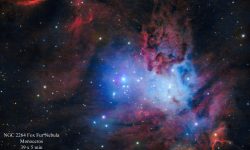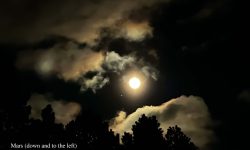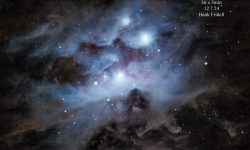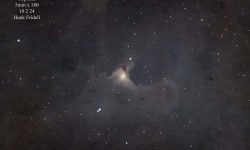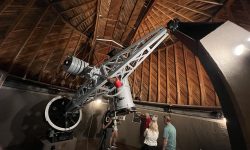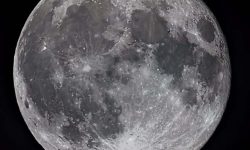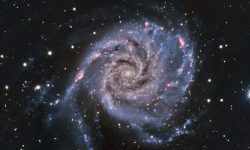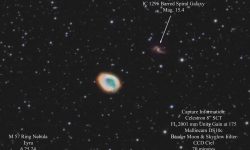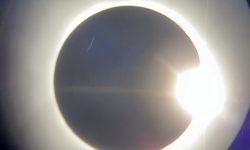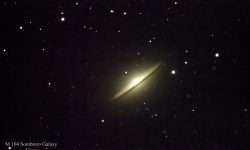April 2025
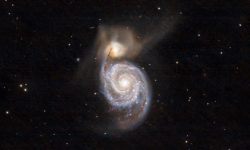
Welcome to Hank’s April 2025 Astrophotography Blog. Spring is showing up, and with it the light snows of Winter have been replaced by rain, and our days are longer. In short, most nights seem to be filled with the Moon or clouds, and our dark sky nights are shorter. It’s hard to predict when there will be good viewing, so I’ve been keeping my eyes on a couple of internet resources to help me out. For up-to-date cloud cover images I go to: https://www.cleardarksky.com/maps/satellite/HddnVlyObSD.html The bulls-eye circle shows the location of the Black Hills Astronomical Society Observatory. This really lets me see the clouds that are headed my way. On my iPhone I use two apps, both available at the Apple Store. 1. Clear Outside shows the percentage of clouds that are low, middle and high. Also, it shows when the Sun and Moon come up and go down, the brightness of the Moon, chance of rain, wind speed, temperature, the Borlel of my sky, etc. (I’ve talked about Bortel before, but briefly it is the amount of light pollution at my location). 2. The Astrospheric app shows much the same data as Clear Outside, but it has a map of my location and how much cloud cover there is. Generally, the two apps agree on the general condition of the skies at night, but the difference is in the details and I have not been able to see if one is consistently more accurate than the other. On the…





